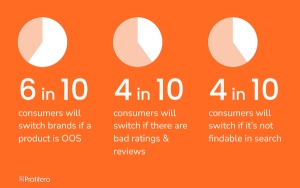We all like to think of ourselves as spontaneous, casual. Unconstrained. As if there’s a chance I’ll show up for work tomorrow in a yellow pantsuit and a boiler hat, or even better: hop on a plane for an impromptu vacation, where I’ll devour romantic novels. There’s also a chance that the Klingons will overtake Earth and that God will manifest in a podcast broadcasted live on Times Square.
It just hasn’t happened yet.
What has happened, so far, is that I’ve generally worn black or blue jeans, and a casual T-shirt to the office, with the exception of a dress shirt from time to time and on special occasions. I heard endless stories of vacations my friends took, and I didn’t have time to. Meanwhile, in the extremely limited time I dedicated to reading, I read, without fail, grim and absorbing literary fiction. Also, planet earth is still at the mercy of humans, and God is the penultimate mystery, second only to my Dropbox password.
Don’t take me for boring. But I will concede that some of my behavior is predictable. And for the world around me, that’s a comfort. It allows the significant people in my life to know me. That’s why they remember to record my favorite show, get me the best new non-fiction, and never buy me a red sweater.
And I love that fuzzy feeling I get – that jolt of affirmation and acknowledgment – when they get it right. Because it’s so, well – so exactly about me.
Brands must get to know their customers on a personal level
As a consumer, I’ve come to expect this same kind of highly personalized interaction from the brands in my life. The smart ones have managed to engage me in a similar kind of personal emotional connection: communicating the right information, in the right tone, at the right time. They have my persona down: they deliver measured doses of that fuzzy feeling, and in exchange I’m happy to grant them practically unlimited access to my inbox, mobile messaging and social media accounts.
Ironically, brands have an easier time of achieving a sense of familiarity than people do. There’s a limited number of individuals that people can know to any real extent – the cited number is anywhere between 60 and 100. This worked brilliantly when humans lived in clans. But in today’s communities there’s a huge chance that when I walk into the store the salesperson will throw that red sweater at me (it’s on sale!), and I’ll react with that inner cringe of like, dude, you don’t really expect me to wear that.
Smart brands, on the other hand, have me figured out. That’s because there’s practically no limit to the amount of data companies can accumulate, and to the amount of customers they can know if they use that data wisely. And that is becoming the standard expectation of today’s connected, empowered customer.
A difficult transformation, but a huge payoff
For serious digital endeavors, cracking the digital-shopper’s genome is an ongoing action item. A recent article on McKinsey called out the importance of converting the vast amount of data regarding consumer behavior and desires into meaningful insights. But this is not just a tactical undertaking. In today’s consumer-centric world, companies who continue to broadcast to consumers in the old fashioned way – to hurl at them the red sweater – will find themselves left by the wayside.
Parsing the consumer has to turn into a major strategic goal. Not one to be taken lightly – it’s a challenge on both the technological and the operational levels. But at present, the realignment of commerce around customers rather than around products may be the be-all and end-all of online businesses.
On the part of brands, this starts out with the realization that today customers want more. They want content that relates to them personally, they expect the ability to move between devices, they delight in real-time recommendations, and they anticipate interactions that pertain to their interests and needs. Customers will no longer be enticed by generic emails and one-size-fits-all messaging. And they’re right: digital gives them unlimited ability to choose where to take their business.
Achieving this feat demands transformation in two key marketing factors: analytics and content. Data and analytics are key to negotiating the more fractured and complex marketing landscape. Decisions about where and how to contact consumers need to be informed by data, and they need to relate to the specific customer’s journey. At the contact point, marketers need to remember that customers don’t care about their brand, their products or their services. Customers care about themselves. This conceptual shift is paramount for delivering the tone of content and interaction that consumers are waiting to hear. And increasingly – these interactions are expected by consumers to occur almost in real time.
A recent ANA survey revealed that for many businesses, these goals are still out of reach. Fifty percent of respondents still do not have clearly defined customer journeys, more than one-third of companies are not using data to make decisions, and almost half say that they still don’t have the right analytics in place. Other major obstacles are a lack of content strategy and distribution process, and organizational frameworks that are still aligned around products and services rather than around customer dynamics.
Marketers have their work cut out for them. Only by taking this integrative approach—by viewing analytics as a strategic rather than an IT issue and mastering the ability to swiftly translate data into concrete, personal action—will businesses be able to keep me (and millions of others like me) coming back for more.
We’re just spontaneous that way.
Digital & Social Articles on Business 2 Community(11)






